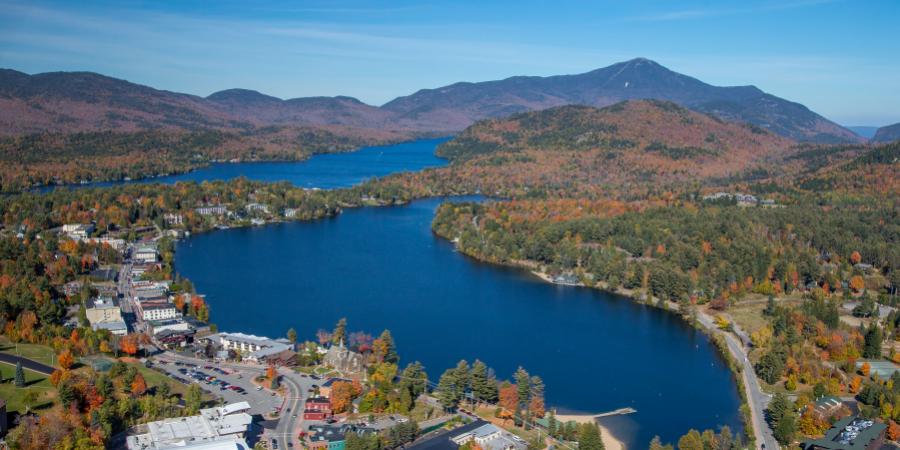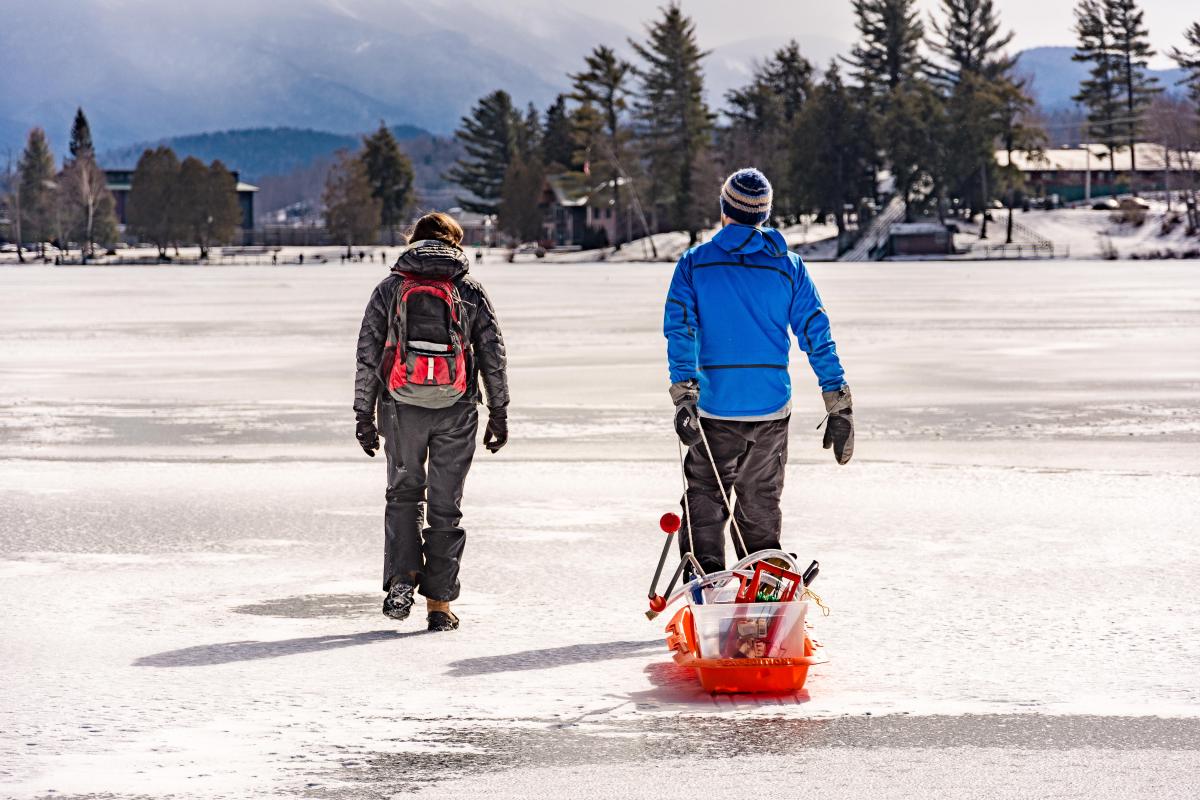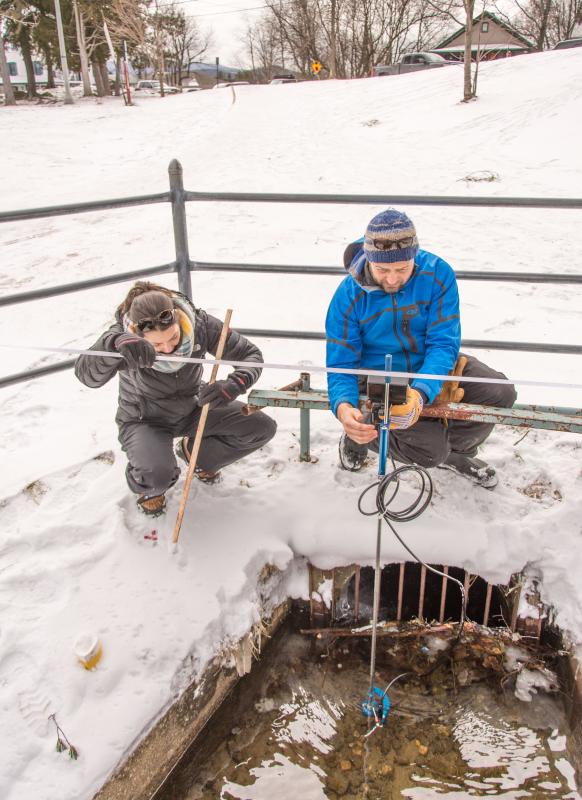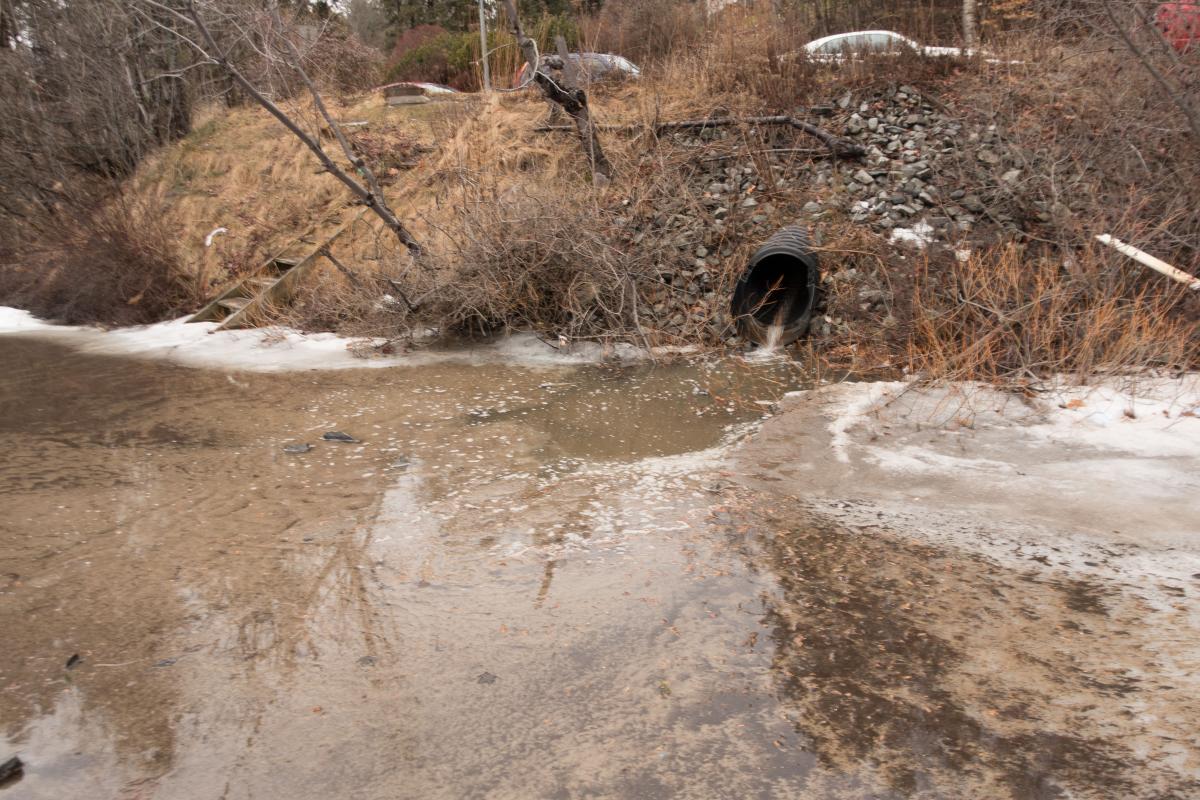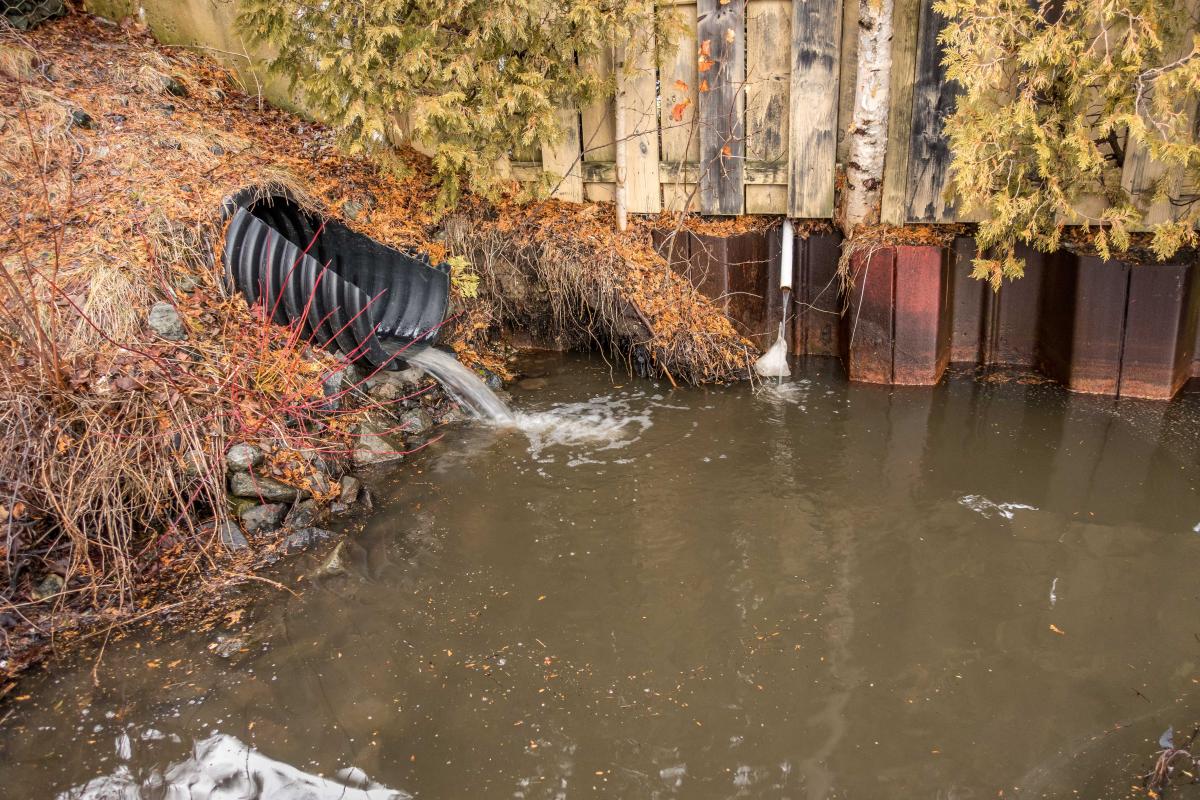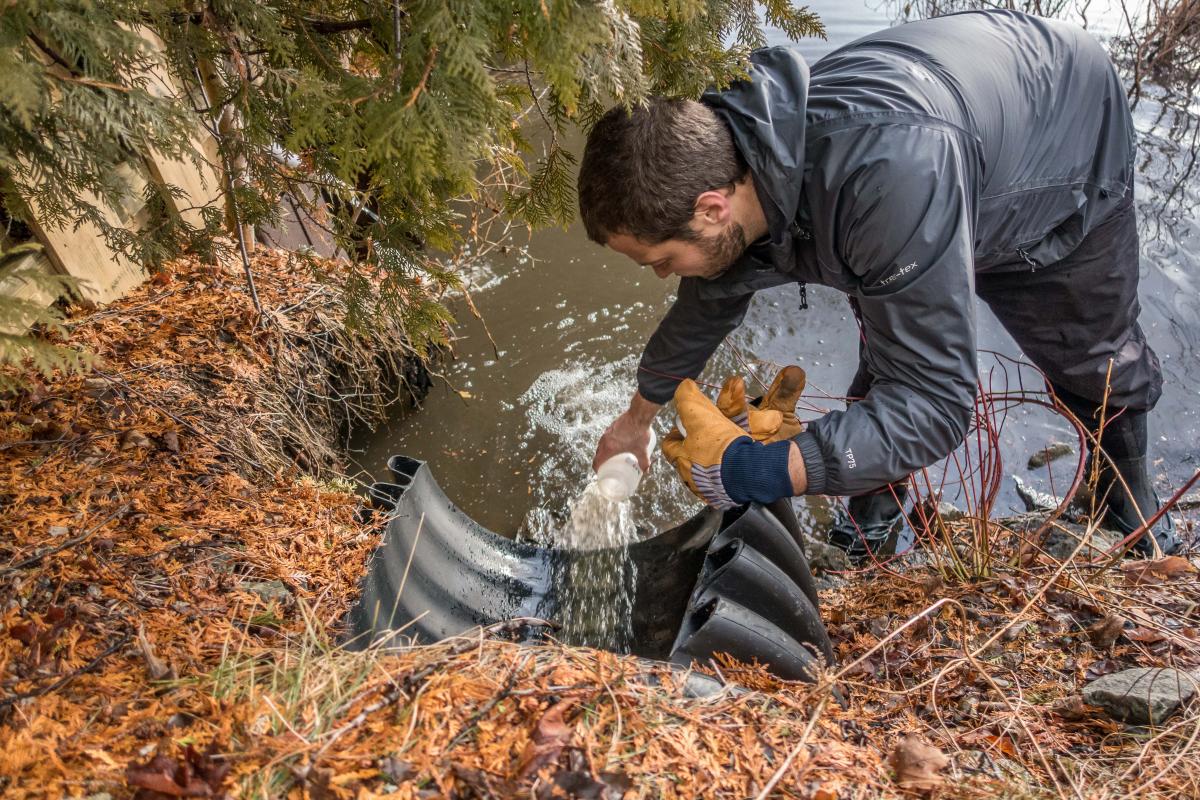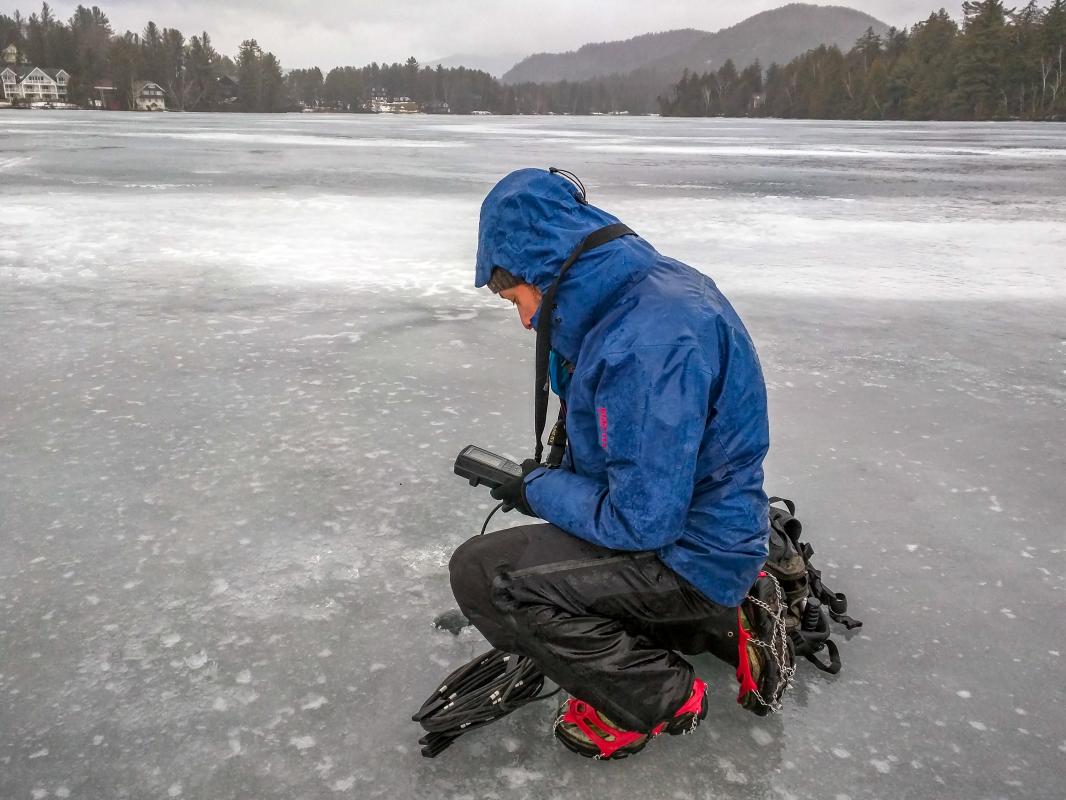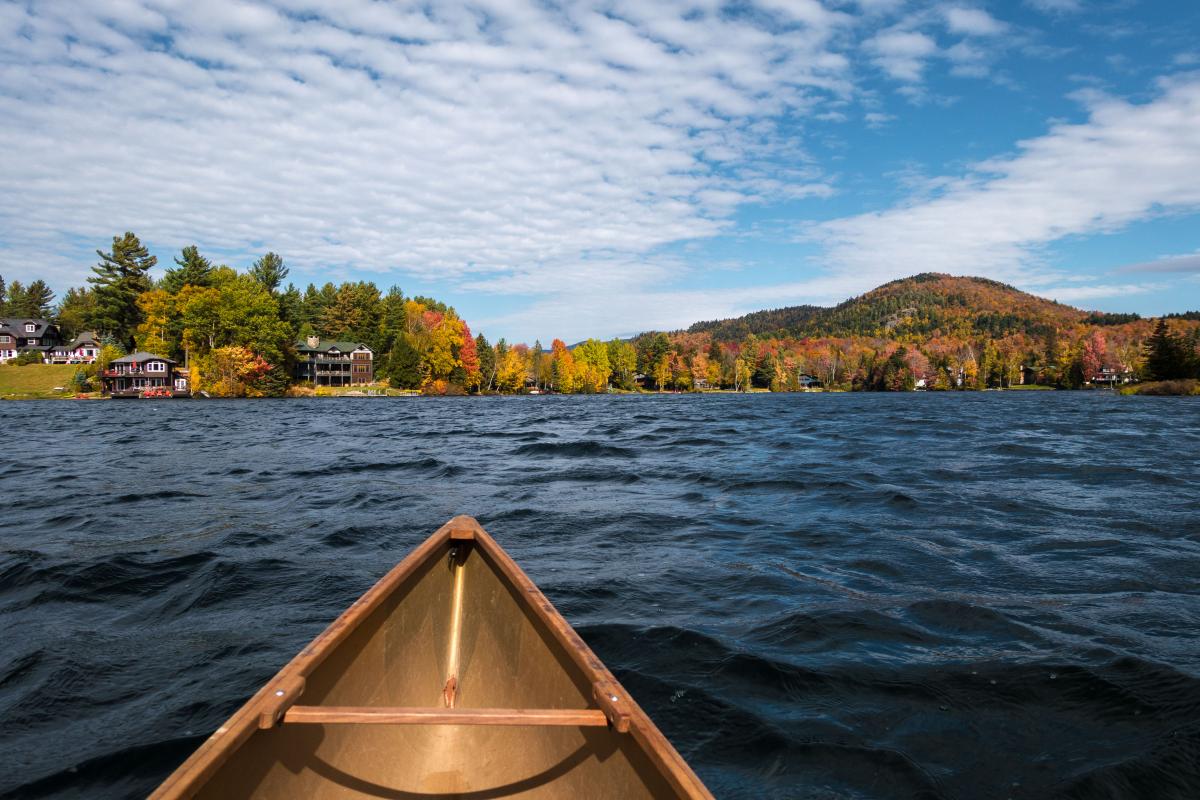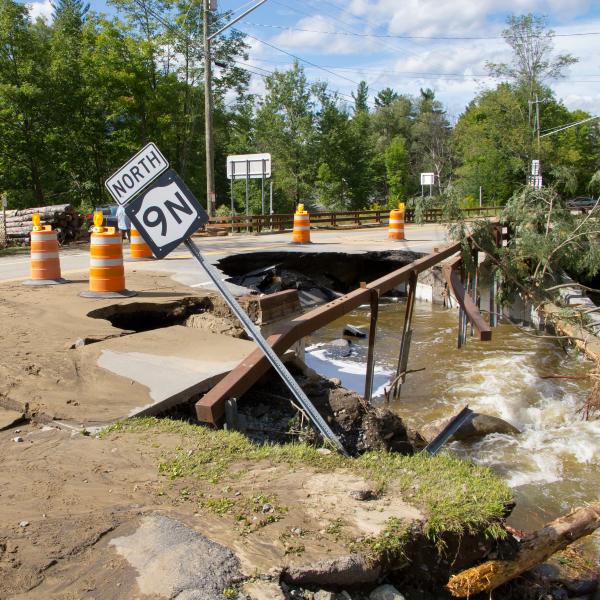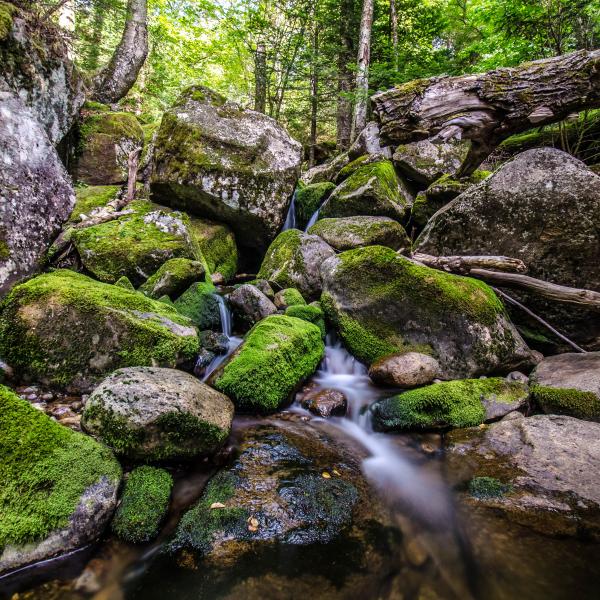The Village of Lake Placid owes much of its picturesque charm to its proximity not to Lake Placid but to Mirror Lake. This small lake's headwaters are located on the slopes of Mt. Whitney and Cobble Hill. Water drains into Echo Lake and then on to Mirror Lake which empties into the Chubb River, a major tributary of the West Branch of the Ausable. Of its 1.2 total square miles, 26% of the Mirror Lake watershed is developed, 19% is surface water, and 55% is forested. A significant portion of downtown Lake Placid sits within the Mirror Lake watershed and Main Street runs along the lake's western shore. This proximity poses significant challenges to maintaining the lake's water quality.
The primary challenges facing Mirror Lake are high levels of chloride and sodium and low oxygen in the deep waters. Mirror Lake has higher levels of chloride and sodium than 97% of the other lakes surveyed as part of the Adirondack Lake Assessment Program. These pollutants enter the lake via the application of road salt to both local and state roads within the watershed. Increasing concentrations of these ions threaten the ability of the lake to support healthy fish populations and other aquatic life. The reduced oxygen in the lake bottom may be a natural phenomenon that is being exacerbated by development, road salt runoff, and climate change.
The Ausable Freshwater Center (AFC) and the Adirondack Watershed Institute (AWI) have launched a year-round monitoring program on Mirror Lake. This work has been supported by North Elba LEAF, the Mirror Lake Watershed Association, Town of North Elba, Village of Lake Placid, IRONMAN Foundation, the New York State Department of State, and private donors. This program will help us better understand the threats facing Mirror Lake and gauge the success of programs to mitigate those threats. We collect vertical profiles of temperature, dissolved oxygen, conductivity, and pH year-round, including through the ice during the winter months. In addition, we collect surface and deep-water samples to be processed by our partner, the Adirondack Watershed Institute. In the spring of 2016 we conducted stormwater outfall monitoring to help us better understand where pollutants such as road salt are originating from.
Mirror Lake Conditions
2021 Water Quality Report
Executive Summary
This is the sixth annual report on the water quality of Mirror Lake issued by the Ausable Freshwater Center (AFC) and Paul Smith's College Adirondack Watershed Institute (AWI). Our ongoing work to study Mirror Lake and threats to its water quality continually yields new insights about the lake. Our goal is to provide stakeholders with the data and science necessary to make informed and effective decisions about how best to protect Mirror Lake. Road salt remains the top threat to the lake but, despite steps toward salt reduction over the past three years, there have been only small improvements in the water quality of Mirror Lake. Beginning in 2019, in response to AFC's Salt Use Reduction Initiative, we started to see active engagement and collaboration between the state, town, village, local businesses, and residents to achieve reductions in salt loading to protect Mirror Lake. We believe this increased engagement in the community, if continued, will yield meaningful reductions in the salt load entering Mirror Lake.
Report highlights include:
1. The lake did not complete turnover in the spring of 2021
2. Lower levels of chloride were seen in the hypolimnion (bottom waters) in 2021 compared to years prior. The average hypolimnion chloride concentration for 2021 was 52 mg/L. The highest chloride concentration recorded in the hypolimnion layer in Mirror Lake was 65 mg/L in 2021.
3. Bottom water hypoxia was documented throughout the summer of 2020. This condition is likely natural for Mirror Lake but is significantly worsened by the lack of consistent spring turnover.
The full report can be viewed here.
Older recent reports from the Adirondack Lake Assessment Program and the Citizens Statewide Lake Assessment Program can be downloaded from the sidebar of this page. Monitoring data for Mirror Lake extends back to 1998 and can be found here.
